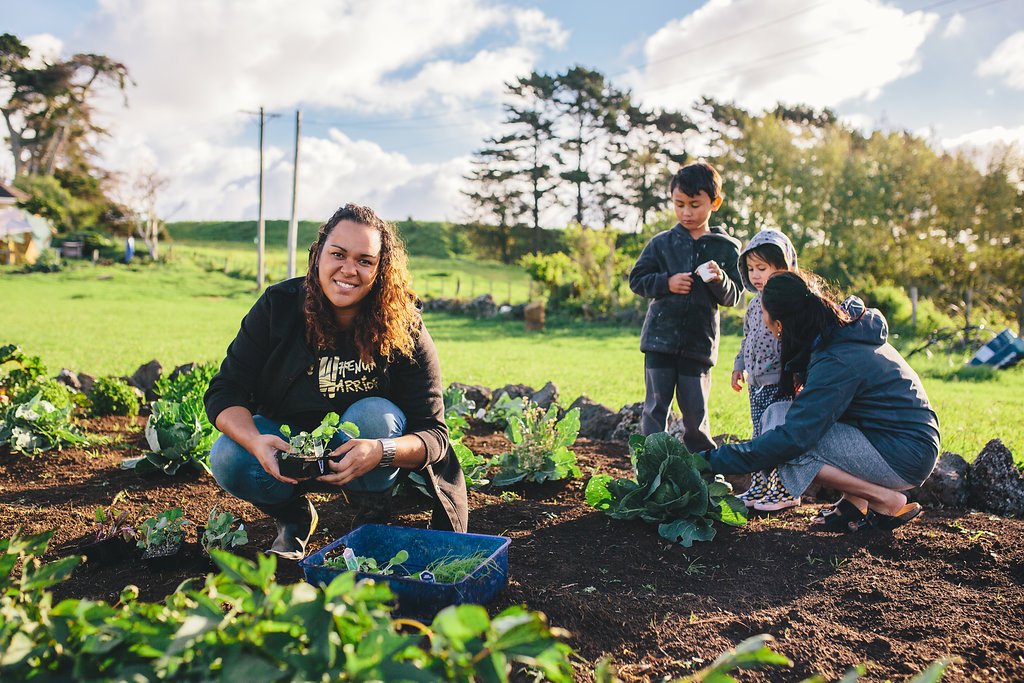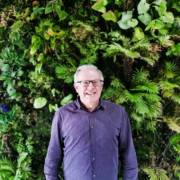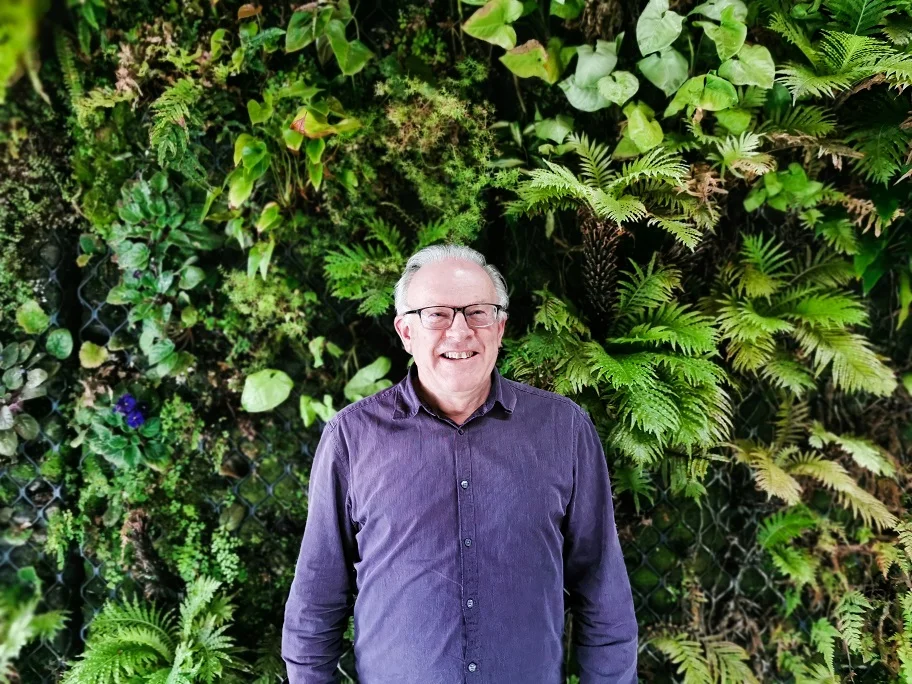Whenua Warrior
Moko Morris talks with Kelly Francis, a Kai Oranga graduate and the catalyst for over 250 food gardens that have been planted since last spring.
This article was originally published in Organic NZ in 2018.
Motivated by attending a Kai Oranga course at Papatūānuku Marae, Kelly Francis (Ngāti Wharara, Ngāti Korokoro and Ngāpuhi) created a charitable trust and social enterprise movement called Whenua Warrior. Her vision is to have a harvestable garden available to every person in the country and her mission is to feed, teach and empower communities through māra kai (food gardens).
Providing solutions and connection
The idea came to Kelly from understanding communities that she had been in, the challenges they face and the solutions she had learnt to share. It solves multiple issues including knowledge- and time- poor whānau, provides financial stability through not having to purchase vegetables, and offers a connection to Papatūānuku (Mother Earth) and what she provides us with.
“The most important thing I learnt on the Kai Oranga course was Hua Parakore – the six principles of the Hua Parakore verification system,” says Kelly.
“It also came from knowing the mana you can get from providing kai to your whānau, the need to understand the whakapapa of your kai and the advantages of connecting your wairua with mahi māra kai. I wanted to find a way to help our communities with these indigenous techniques and tried to imagine the entire country understanding their food in this depth… and then find a way to give that koha to them.”
So Whenua Warrior was born.
How it works
Involving others comes naturally for Kelly; they usually find her. It’s the story, passion or mahi behind each project that attracts people to her kaupapa. Finding people is very important to her – but whoever is there on the day are the people that were meant to be. Her approach to gardening projects is to ensure that community and their needs are met first and foremost. What Whenua Warrior build and who they build it with needs to be sustainable and beneficial for years to come. Anyone can put a box of dirt in your backyard, but not everyone can teach how to get that box of dirt to benefit you, your family, hapū and iwi.
Once a māra kai is established, there must be buy-in from families so that there is a foundation of people that work together to ensure the benefits are felt wide and far.
‘Build day’ is about the community and its people, not the garden. Post-build is about supporting the people to support the garden.
There are two different arms to the Whenua Warrior approach
1. 100% community-based, with no money involved. The community identifies what they need and Whenua Warrior supports them to source seedlings, soil and materials, then helps to facilitate the build and works out ways it can be managed.
2. 100% community-based, backed by funding. A call-out is made to the community as above, then funding is accessed if required.
This approach has been successful and over 250 māra kai have been built so far, in South Auckland, Mount Wellington and Whangārei. Whenua Warrior is now in its eleventh month, and has started on more of the larger-sized gardens rather than focus on the number. In September this year, 50 gardens will be built in the back of 50 homes in Kawakawa. The process from initial contact to actual build varies from place to place but is usually done in under six weeks.
Hua Parakore principles
Kelly explains the principles of Hua Parakore (clean, pure, kai atua) in the following way:
“When contemplating a project, I look at the dates of the maramataka (moon planting calendar) that I can plan on to benefit the build day, hui days, decision days. It is an important aspect in all parts of the project for the wellness of people and for the timeline structure for the project.
“I consider te ao tūroa [the natural world] when we are on the whenua and trying to discover what Papatūānuku already has and what can be built to benefit the tangata whenua. Knowing your surroundings and your options for build is something our tohunga would be responsible for before the land was confirmed to build māra on.
“At this stage whakapapa is considered as well. What happened here? How was this whenua used? What is the whakapapa of the area, people, whenua? Kōrero on the land will potentially allow us to discover the best possible places to plant A versus B.
“We then have the holistic connections that are in our principles: wairua, or spirit. I ask to make sure that I am allowed on the land to do the mahi – ask tangata whenua directly but also karakia to ask our tupuna to ensure our holistic safety. We connect everything physical to spiritual and must acknowledge everyone at every time.”
Wairua can also be a verb – ‘acting with wairua, doing with wairua’, says Kelly. “All actions taken in the build day must have everyone’s wairua in mind. I think that the wrong wairua can mean an empty plate. Everyone must be in tune with each other… and share the mauri.
Mauri is what you are passing on from you to kai, and from kai back to you. This is most important when planting – and the atmosphere for planting needs to be completely serene and positive. What you plant is what you eat, and I consider it a hugely important part of build day to get the community mauri at its highest to allow the passing from them to their kai, and eventually from the kai to them.
Mana – this is felt mainly when all of the above has been completed. The principle that can only be reported to yourself. Mana is not something you earn – it is something within you. Only you can choose how much mana you apply to each decision you make. It is your spiritual pat on the back – and I normally feel this when I am back home and contemplating the completion of each project.
Whānau and kai more important than money
Kelly says the most fun part is meeting the communities and teaching and learning at the same time together. She shares the matauranga (knowledge) in a way that benefits Papatūānuku, focusing on knowing that people are better off and proving her strong view that money shouldn’t be the main focus of life: family and kai is.
“I built this idea out of hope, because I truly care about what your kids will be able to access when they are responsible to provide food for their tables. We should be thinking of what we can do NOW to benefit them then,” says Kelly.
“I strongly encourage all families in New Zealand to plant fruit trees and vegetables in every household. There are no negatives to growing your own food.”
Moko Morris is a former a Soil & Health National Councillor who lives in Ōtaki. She has also been the national coordinator of Te Waka Kai Ora, the National Māori Organics Authority of Aotearoa.



